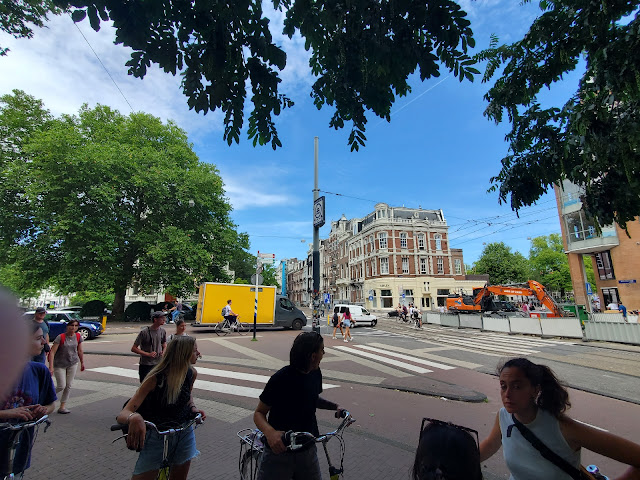Arriving in Copenhagen
I enrolled in this study abroad course to experience how biking for transport can work when provided with supportive infrastructure. Moreso though is to understand how culture translates into the political will required to advance projects that make design concepts into reality. The United States remains an automobile-dominated transportation system. Traffic plagues nearly all major cities and metropolitan areas. The consequences of lost time spent in traffic, the personal effects of sedentary lifestyles and externalities such as social exclusion, and the environmental impact of gasoline use and emissions are well understood.
The predominant response to the consequences of an automobile-dominated system is “green” the vehicle fleet. Essentially, “how can we keep what we have, but not pollute the environment at the same time”? Nevertheless, such solutions do not address the disparities in car ownership between different populations. For example, electric vehicles are more expensive compared to gas-powered vehicles. The U.S. still lacks the widespread infrastructure of charging stations required to support the mass adaptation of electric vehicles. Another issue is the prevalence of deaths that occur as a result of car crashes. Data as recent as 2021 notes that the leading cause of death among children (defined as ages 1 – 19) in the U.S. is motor vehicle crashes. Urban sprawl further facilities dependence on automobile transport.
Biking as transportation, however, can address several of these problems. It is a human-powered mode, doubling as a mode of transport and physical activity. Parking a bike requires less space than parking a car, supporting more efficient land uses (less need for large, asphalt parking lots, which often times remain half-filled or nearly empty for half of the day). The cost of acquisition is considerably less than a purchase of a motor vehicle, lowering the barrier of entry for lower-income households. Lastly, biking can often cut the commute time considerably for individuals traveling from location to location. Yet, in the United States, walking and biking remain dangerous due to the significant presence of automobiles and a lack of supportive infrastructure for biking.
What is frustrating is that there is clearly a solution to the woes brought on by dependence on automobile usage. Yet, U.S. residents resist the adoption of biking. In my personal life, I often hear complaints about bicyclists on the road, occupying space “that does not belong to them, but to the car”. In my opinion, our issue in the U.S. is cultural attitudes about the “proper” mode of transport. It is a perspective or feeling that if you do not own or drive a car, something must be wrong with you. I am often met with surprise and confusion when I inform people that I sold my car before arriving in Oregon and live car-free. I found it relatively easy to navigate Eugene and meet my transport needs due to the existing biking infrastructure but also the availability of reliable public transit service. The availability of bike share also supports my ability not to own my own bike or be concerned with bike theft. Not to mention, my wallet is very thankful for the reduced expense required for transport.
So, what I most wish to take away from this immersive learning experience is not only to observe how the infrastructure supports biking as transport but to understand from both perspectives (Danish and Dutch) how the cultural attitudes pushed government officials to design policy that drives the action required to create a transport system where biking is as efficient, if not more efficient, than car ownership.



Comments
Post a Comment